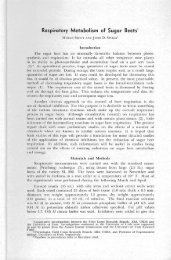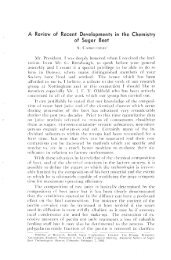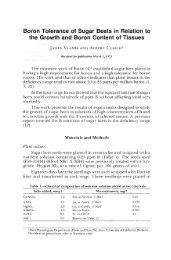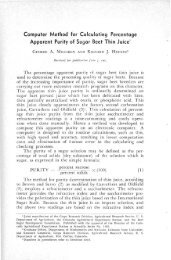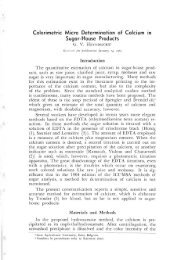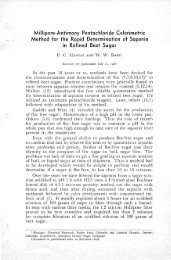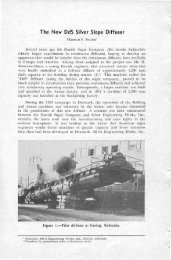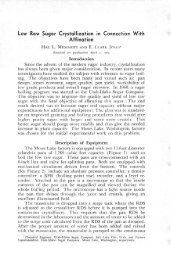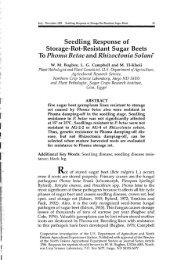Journal of Sugar Beet Research - Vol
Journal of Sugar Beet Research - Vol
Journal of Sugar Beet Research - Vol
Create successful ePaper yourself
Turn your PDF publications into a flip-book with our unique Google optimized e-Paper software.
January - June 2008 <strong>Sugar</strong>beet Response to Nitrogen 27<br />
applied. This resulted in significantly greater SLM and significantly<br />
lower percent extraction with any rate <strong>of</strong> applied N when compared to<br />
the untreated check under sprinkler irrigation (Table 3). Halvorson, et<br />
al. (1978) reported that excess available N late in the growing season<br />
resulted in increased crown tissue, which contained much greater concentrations<br />
<strong>of</strong> sodium (Na) and amino-N than root tissue. Carter (1986)<br />
reported that both Na and potassium (K) uptake were associated with<br />
N uptake, with major concentrations <strong>of</strong> these impurities located in the<br />
sugarbeet tops and crowns. The gradual increase <strong>of</strong> SLM and decrease<br />
<strong>of</strong> percent extraction under furrow irrigation (Table 2) indicate that as<br />
applied N is increased, available N later in the season may increase<br />
slightly. The rapid increase <strong>of</strong> SLM and decrease <strong>of</strong> percent extraction<br />
under sprinkler irrigation (Table 3) indicate that N is available late in<br />
the season with any amount <strong>of</strong> applied N.<br />
<strong>Sugar</strong>beet grown under furrow irrigation achieved greatest root<br />
and sucrose yield with rates <strong>of</strong> available N ranging from 169-197<br />
kg/ha. Under furrow irrigation, Na and amino-N continued to increase<br />
as applied N was increased. This resulted in SLM continuing to<br />
increase with increased applied N, while percent extraction continued<br />
to decrease.<br />
<strong>Sugar</strong>beet grown under sprinkler irrigation achieved greatest root<br />
and sucrose yield with rates <strong>of</strong> available N ranging from 112-197 kg/ha.<br />
Impurities and SLM were significantly increased when any rate <strong>of</strong> N<br />
was applied N compared with no applied N. <strong>Sugar</strong>beet under sprinkler<br />
irrigation would not respond in this way under circumstances in which<br />
the sprinkler is turned on and allowed to run constantly, as is necessary<br />
with sandy soil. In that case, leaching and run<strong>of</strong>f would probably result<br />
in loss <strong>of</strong> available N.<br />
ACknoWLeDGeMenT<br />
This research was funded in part by Sidney <strong>Sugar</strong>s, Inc, the Montana/<br />
Dakota <strong>Beet</strong> Growers Association, and the Montana Fertilizer Advisory<br />
Committee.<br />
LITeRATuRe CITeD<br />
Adams, R.M., P.J. Farris, and A.D. Halvorson. 1983. <strong>Sugar</strong> beet N<br />
fertilization and economic optima: recoverable sucrose vs. root<br />
yield. Agron. J. 75:173-176.



